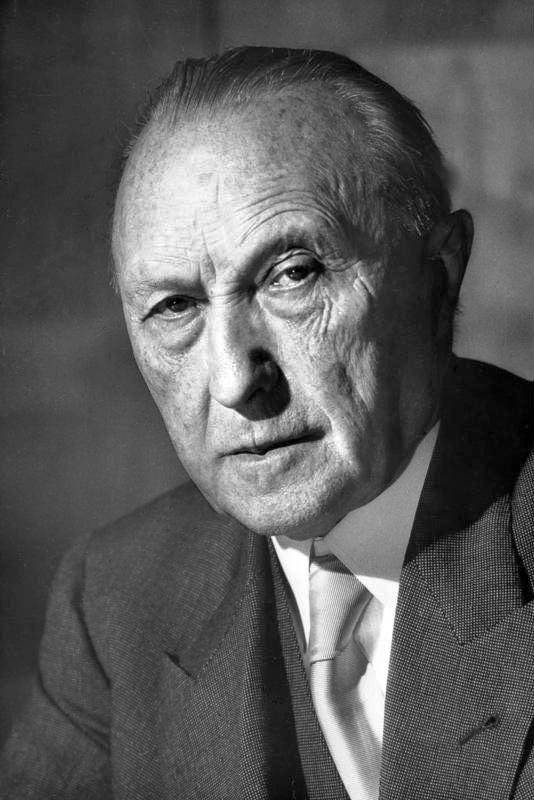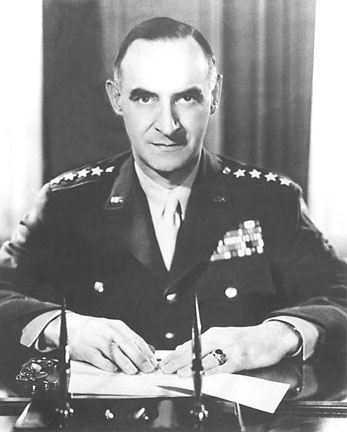The American Occupations of Japan and Germany
The American Occupation of Germany and the Rebuilding of Europe
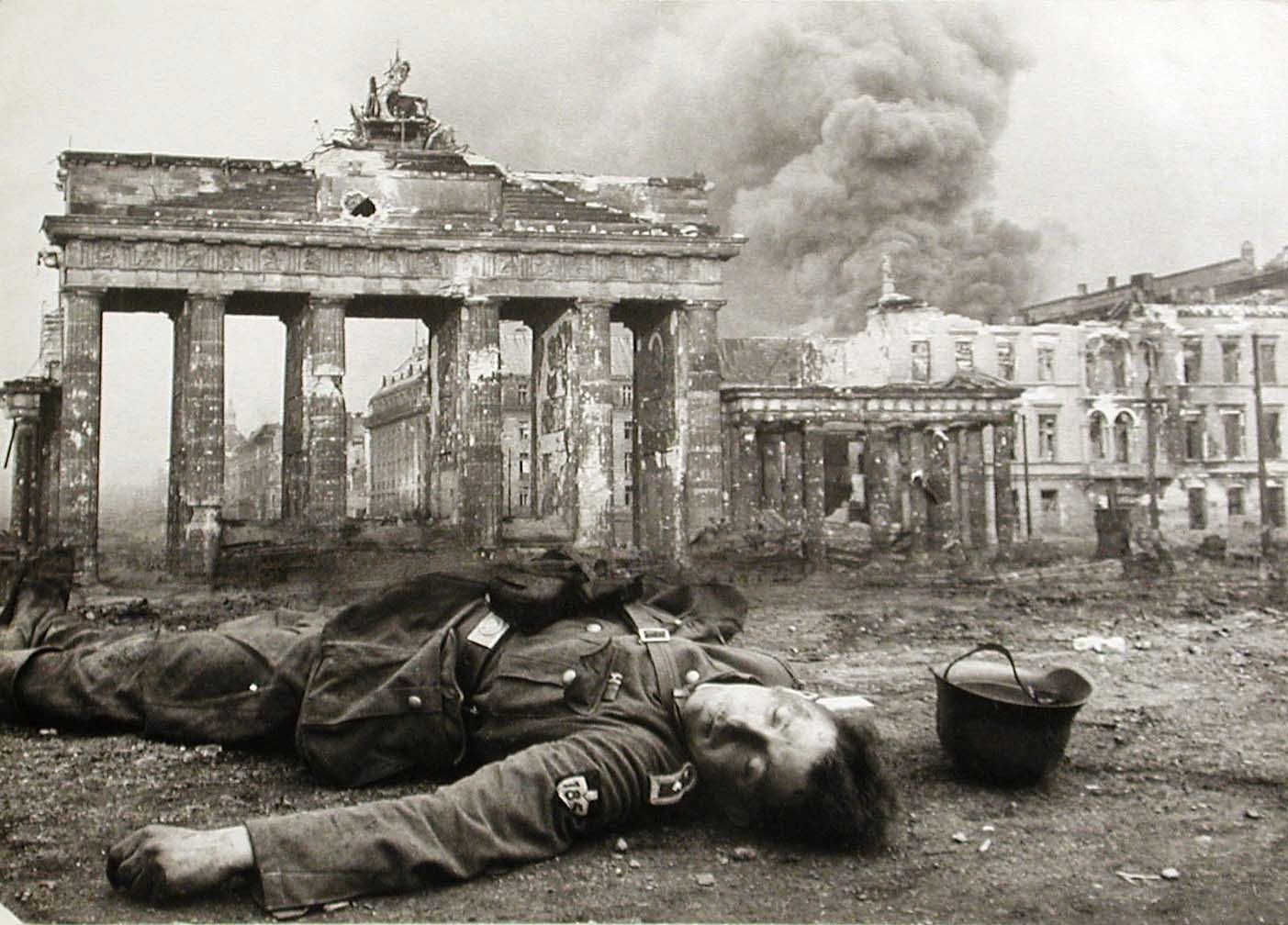
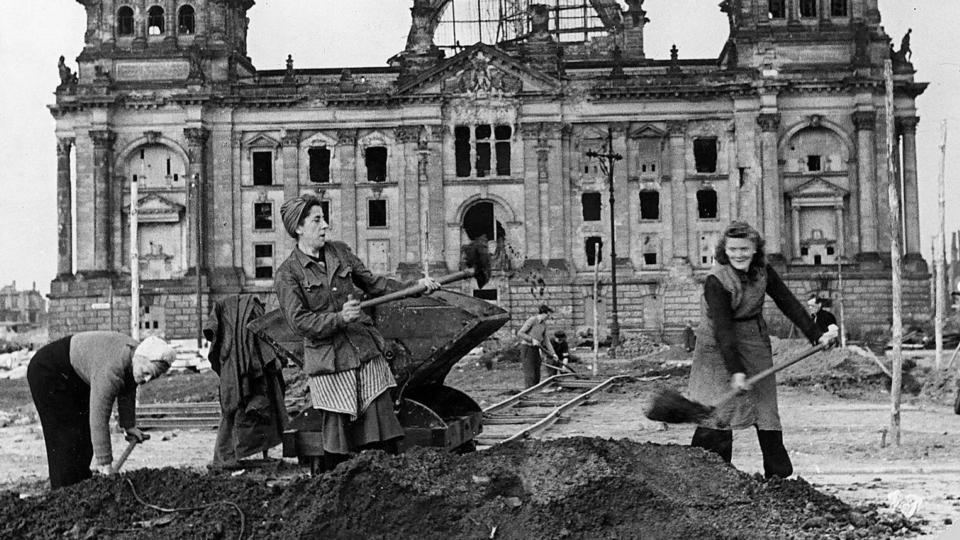
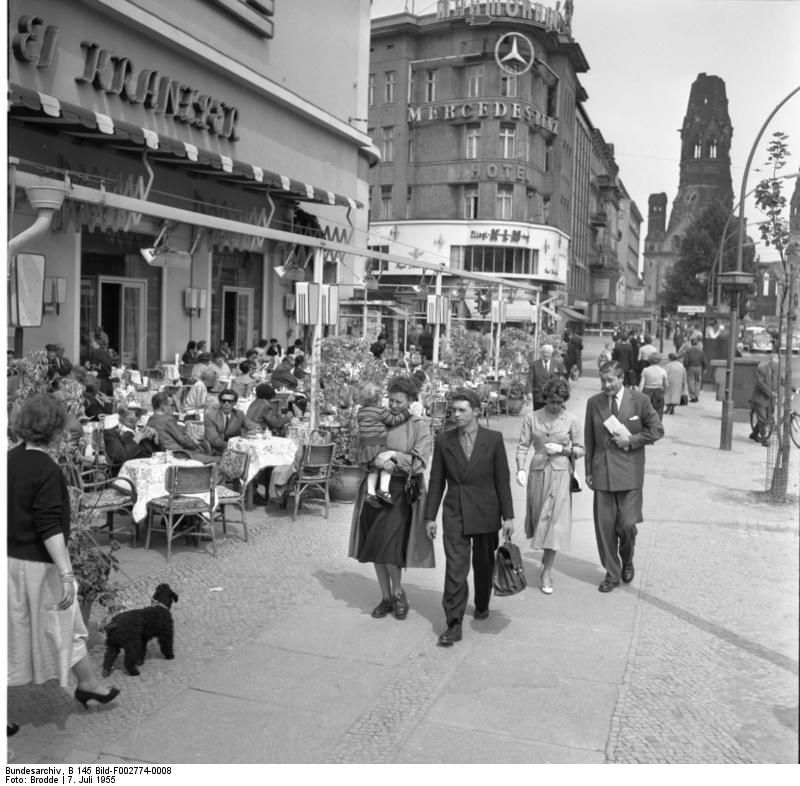
Audio: The Occupation of Germany (10:32)
| 1945 | |
| Feb.4-11 | Yalta Conference: Among other topics: Occupation of Germany |
| May 7-9 | Signing of German Surrender |
| July 1-4 | Withdrawel of British & American troops from East Germany; Western troops entered Berlin |
| June 5 | Berlin Declaration by the Allies assuming supreme powers in Germany |
| July 17-Aug.2 | Potsdam Conference: Among others topics: Occupation Zones |
| 1946 | |
| April | Amalgamation of the K.P.D. and S.P.D. to form the S.E.D. in the East |
| Dec.2 | Washington Treaty on the economic unification of the British and American zones. |
| 1947 | |
| June 5 | Secretary of State George C. Marshall proposes a program of economic assistance for Europe in a commencement address at Harvard University |
| June 27 | British Foreign Secretary Ernest Bevin arranges conference to discuss the proposal by Marshall. Soviet Foreign Minister Molotov fears interference with national sovereignty and withdraws from conference |
| July 12 | Paris Conference attended by delegates from 16 European countries opens to devise a recovery plan; Soviets decline to attend and prevent other Eastern European from participation |
| Dec.19 | President Truman sends draft of European Recovery Plan bill (later known as “Marshall Plan”) to Congress |
| 1948 | |
| March | U.S.House approves Marshall Plan, 318-75; Senate 69:17 |
| March 20 | Last session of Allied Control Commission (Disunity among occupation powers) |
| April 3 | Truman signs Marshall Plan bill into law. |
| June 20/21 | Currency Reform in Western zones (introducing Deutsche Mark) |
| June 26 | Start of Berlin Airlift (Luftbrücke) after Soviets blockaded all land access to Berlin;marked the beginning of the 40-year U.S. commitment to the freedom of (West) Berlin. |
| 1949 | |
| May 12 | ‘Berlin Blockade’ is lifted by Soviets |
| May 23 | “Basic Law” (Grundgesetz) as West Germany’s Constitution |
| August 14 | Election of first Bundestag |
| Sept.12 | Election of Theodor Heuss (FDP) as first (West) German Federal President |
| Sept.15 | Election of Konrad Adenauer (CDU) as first Federal Chancellor |
| Oct.7 | GDR (DDR) was formally established |
| 1950 | |
| Jan.6 | End of Food Rationing in West Germany |
| June 25 | Start of Korean War (until cease fire on July 27, 1953) |
| 1951 | |
| April 18 | Signing (in Paris) of the European Coal and Steel Community (ECSC) Treaty (Forerunner of economic union of EU) |
| 1952 | |
| May 26 | Signing (in Bonn) of FRG’s “Germany Treaty” (which includes reunification as a political goal) |
| May 27 | Signing (in Paris) of the European Defense Community (EDC) |
| Sept.10 | Signing of the Reconciliation Treaty between Israel and West Germany |
| 1953 | |
| March 3 | Death of Stalin |
| June 17 | Uprising in East Berlin & East Germany |
| July 27 | Cease Fire in Korea |
| Dec.1 | George Marshall is awarded Nobel Peace Prize for his contributions to the economic recovery of Europe. |
| 1954 | |
| Jan.25-Feb.18 | Abortive Four-Power Conference in Berlin on German re-unification. |
| Oct.23 | Signing of the Paris Agreements. FRG/BRD is invited to join NATO permitting West German rearmament, and Italy and the FRG/BRD accede to the Western European Union (WEU). |
| 1955 | |
| May 5 | Paris Treaty in force (establishing sovereignty for West Germany [FRG/BRD]) |
| May 14 | Founding of Warsaw Pact (including the GDR/DDR) |
| Sept.9-13 | Chancellor Adenauer visits Moscow |
